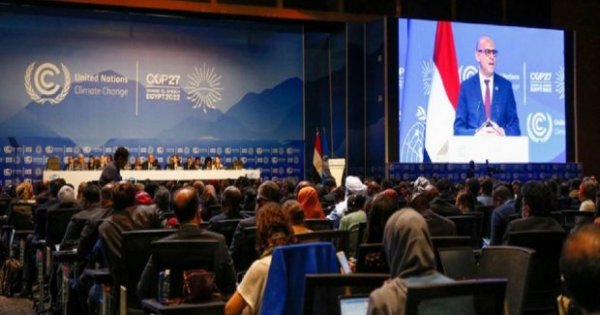COP or which has a length Conference of Parties where the Conference of the Parties is the highest decision-making conference United Nations Framework Convention on Climate Change (UNFCCC).
The COP was signed in 1992 at the Earth Summit in Rio de Janeiro and entered into force in 1994. To learn more, here is the complete history of the COP. activesustainability.com.
History of the beginning of the COP
The COP began when the world realized the importance of negotiations on environment. The whole world is aware that climate change has become a dangerous condition for humans.
This phenomenon is also a factor that has caused environmental issues that were originally low politics to become high politics. The main question posed is how to overcome so that the concentration of greenhouse gases (GHGs) can be reduced and stabilized so that the earth’s climate does not continue to deteriorate.
In 1992, The United Nations or the United Nations (UN) held a convention on environment and development, namely the UNFCCC in Rio de Janeiro, Brazil. This convention aims to stabilize the concentration of GHGs in the atmosphere resulting from human activities harmful to the climate.
It is the principle of the conference that although each party has the same responsibilities, there are particular distinctions based on their capabilities. More than 150 countries have agreed, agreed and signed a cooperation agreement on preventing and anticipating climate change by fixing GHGs.
The COP is held once a year. This conference brought together all the member countries of the convention. The first COP was held in Germany in 1995.
At the convention, the Berlin mandate which contains the agreement of the parties to launch the process of taking action after 2000 and strengthening the commitment of developed countries by adopting protocols or other legal instruments was agreed.
History of the COP
The history of the first COP that took place also gave a mandate to all parties to launch a new round of talks on the commitments of developed countries. The conference also formed an ad hoc group on the Berlin Mandate Team to draft the agreement. After about 8 (eight) tries, the text that was submitted to COP 3 in Kyoto, Japan in 1997 was born.
Previously, COP 2 was held in Geneva, Switzerland in 1996. COP 2 agreed on 10 points of the Geneva Declaration which essentially calls on all parties to support the development of the Kyoto Protocol and other instruments legal basis based on scientific findings.
In addition, COP 4 was held in Buenos Aires, Argentina in 1998. COP 4 resulted in the Buenos Aires Action Plan (BAPA). This is the first COP to be held in a developing country. In BAPA, all parties are required to allocate 2 years to strengthen commitment to the convention and plan preparation and implementation of the Kyoto Protocol.
COP 5 was then held in Bonn, Germany in 1999. The implementation of the BAPA was also discussed, although it did not produce any major conclusions. Then COP 6 was held in The Hague, Netherlands in 2000 and is considered a negotiation disaster in the history of the COP.
Indeed, there is no implementation of the BAPA linked to the operation of the Kyoto Protocol. The Kyoto Protocol is the main agenda of the COP. As a result, there was a delay of 6 (six) months and the second part of COP 6 was held in Bonn, Germany in 2001.
During the second part of COP 6, there was an agreement on a financing mechanism under the Kyoto Protocol, establishing and adapting the Clean Development Mechanism (CDM). Additionally, for the negative impacts of climate change, funding will be managed through the Global Environment Facility (GEF) and technology development and transfer points by forming a 20-member group of technology experts .
Subsequently, COP 7 was held in Marrakesh, Morocco in 2001 with the outcome of the Marrakesh Accord. The objective of COP 7 is to finalize an agreement on a detailed plan on how to reduce emissions in accordance with the Kyoto Protocol and to reach an agreement on actions to strengthen the implementation of climate change.
COP 8 was held in New Delhi, India in 2002. The COP resulted in the New Delhi Declaration consisting of 13 points. In addition, COP 9 was held in Milan, Italy in 203 to discuss clean development mechanisms in the forestry sector and adoption of afforestation and reforestation decisions under the CDM program.
The history of the last COP, namely COP 10, was held in Buenos Aires, Argentina, in 2004, and discussed adaptation to climate change. The aim is to encourage developed countries to allocate part of their resources to developing countries affected by climate change.
COP 11 was held in Montreal, Canada in 2005. COP 11 produced a draft in which parties ratifying the Kyoto Protocol would meet at the COP but had no vote in decision-making.
COP 12 was held in Nairobi, Kenya in 2006. Issues discussed were the implementation of the timing and quantity of the emission target for commitment period II after 2012. In addition, the COP 12 also discussed the possibility of programs other than the CDM.
COP 13 was then held in Bali, Indonesia in 2007. The issues discussed were the reduction of greenhouse gas emissions and four important issues of climate change. The four issues are mitigation, finance, adaptation and technology transfer. COP 13 produced the Bali Action Plan.
COP history then was COP 14. COP 14 was held in Poznan, Poland in 2008. There is clear and unanimous disagreement because in Western countries there is still a transition period of leadership change. COP 15 also took place in Copenhagen, Denmark in 2009, which resulted in the Copenhagen Accord and was considered non-binding.
COP 16 took place in Cancun, Mexico in 2010 and discussed the regulation of greenhouse gas emissions. COP 17 took place in Durban, South Africa in 2011 and produced the Durban Platform on a roadmap for a global climate agreement that applies from industrialized to developing countries to reduce their emissions.
COP 18 was held in Doha, Qatar in 2012 with an agreement to continue implementation of the second commitment period of the Kyoto Protocol for 8 years from January 1, 2003. COP 19 was held in Warsaw, Poland in 2013 producing Warsaw Framework for REDD+ Where Reducing emissions from deforestation and forest degradation More.
COP 20 was held in Lima, Peru in 2014, which agreed that all countries must actively participate in efforts to control and manage climate change in the future by forming decisions as legal instruments.
COP 21 in Paris, France in 2015 resulted in an agreement between the parties adopting a series of decisions. COP 22 in Marrakech in 2016 was slightly against all odds. The Paris Agreement comes into force a few days before COP 22.
COP history then was COP 23. At COP 23 in Bonn in 2017, progress was made on the details of this Paris Agreement in the practice book for completion in 2018. COP 23 created the Talanoa dialog.
COP 24 in 2018 discussed the IPCC report which analyzed the impact of a global temperature increase of 1.5 degrees Celsius (0VS). He pleads for greater urgency in reducing polluting emissions. Talanoa’s dialogue ended.
COP 25 was held in Madrid in 2019. Launched from ppid.menlhk.go.id, Indonesia successfully defended its interests at COP 25 by including the issue of the sea in decision number 1 of COP25.
During the COP 26 which will take place in 2021. Indonesia is considered a country Super power in the field of the fight against climate change by Alok Sharma, President-designate of COP 26.
COP 27 was held in Sharm El Sheikh, Egypt. Launch of unfccc.int, the aim is to build on successes and pave the way to effectively address the global challenge of climate change. COP 27 will take place from November 6 to 18, 2022.

“Travel nerd. Social media evangelist. Zombie junkie. Total creator. Avid webaholic. Friend of animals everywhere. Future teen idol.”


:strip_icc():format(jpeg)/kly-media-production/medias/3387188/original/007486800_1614303448-banner__1_.jpg)



